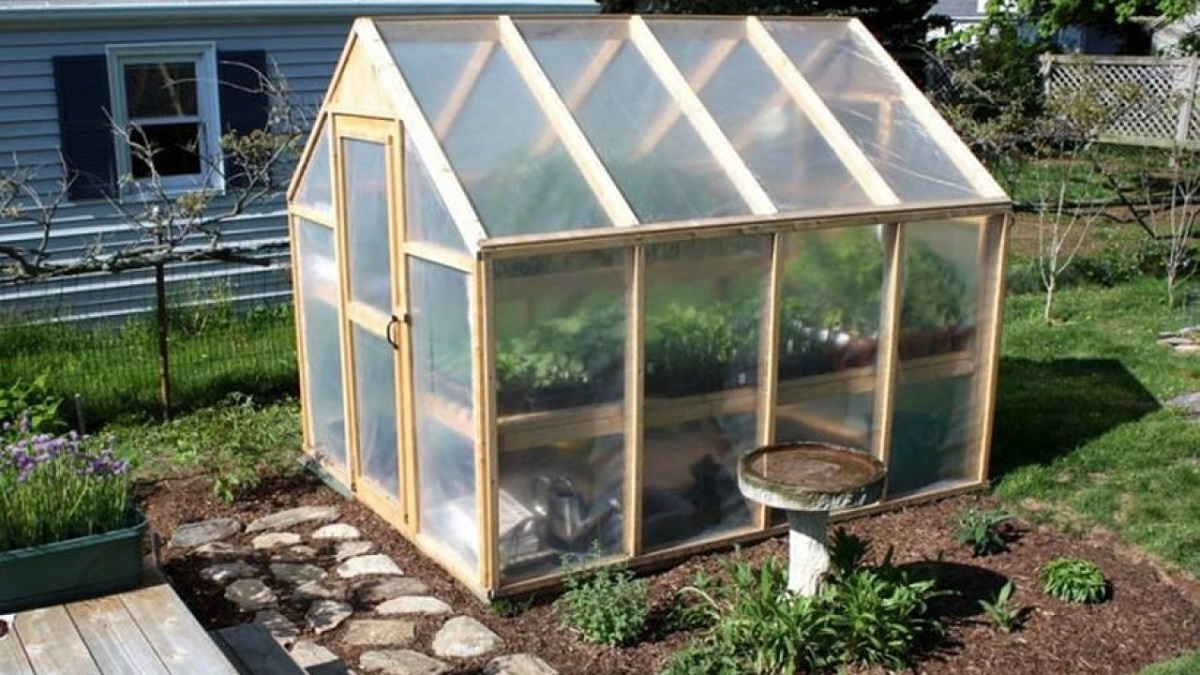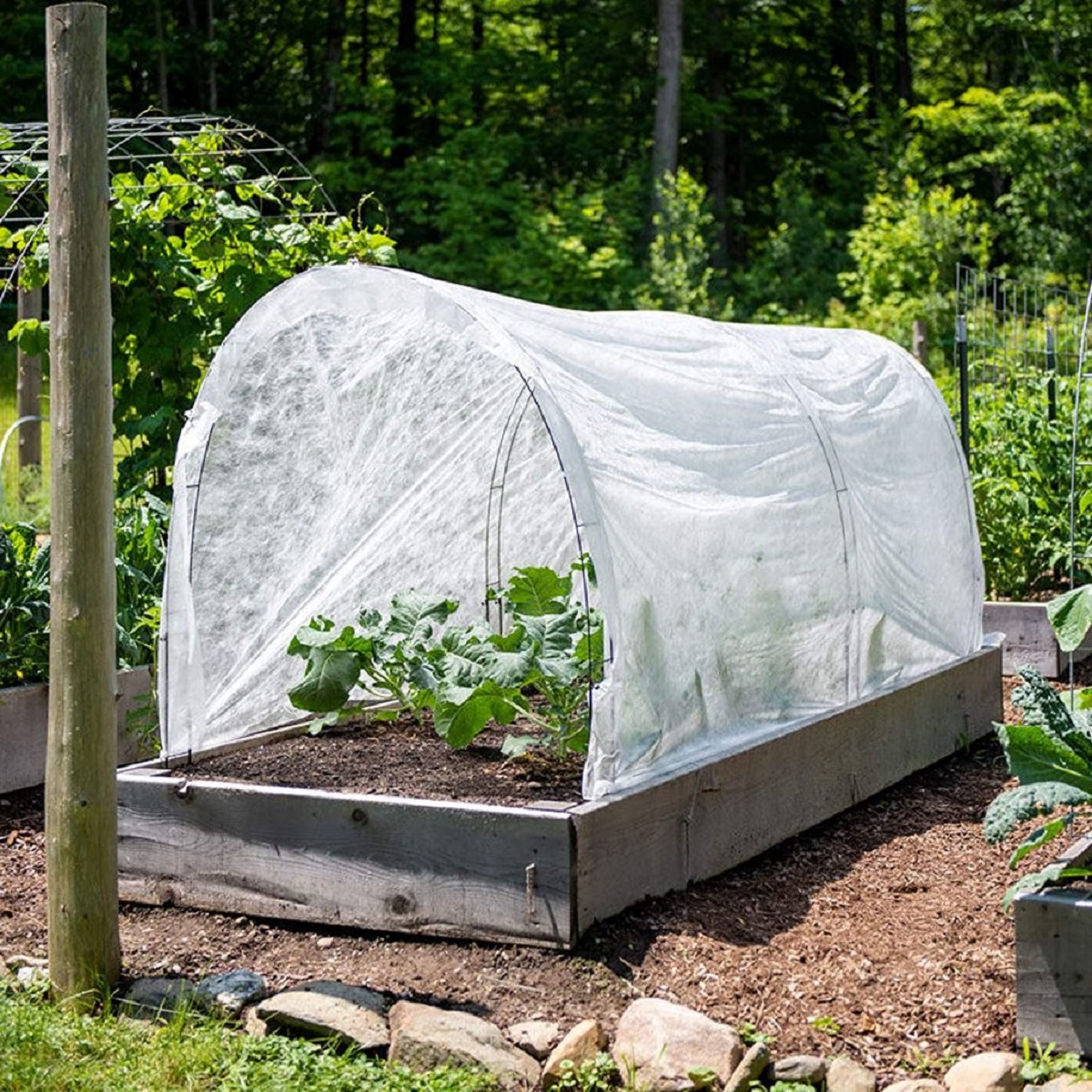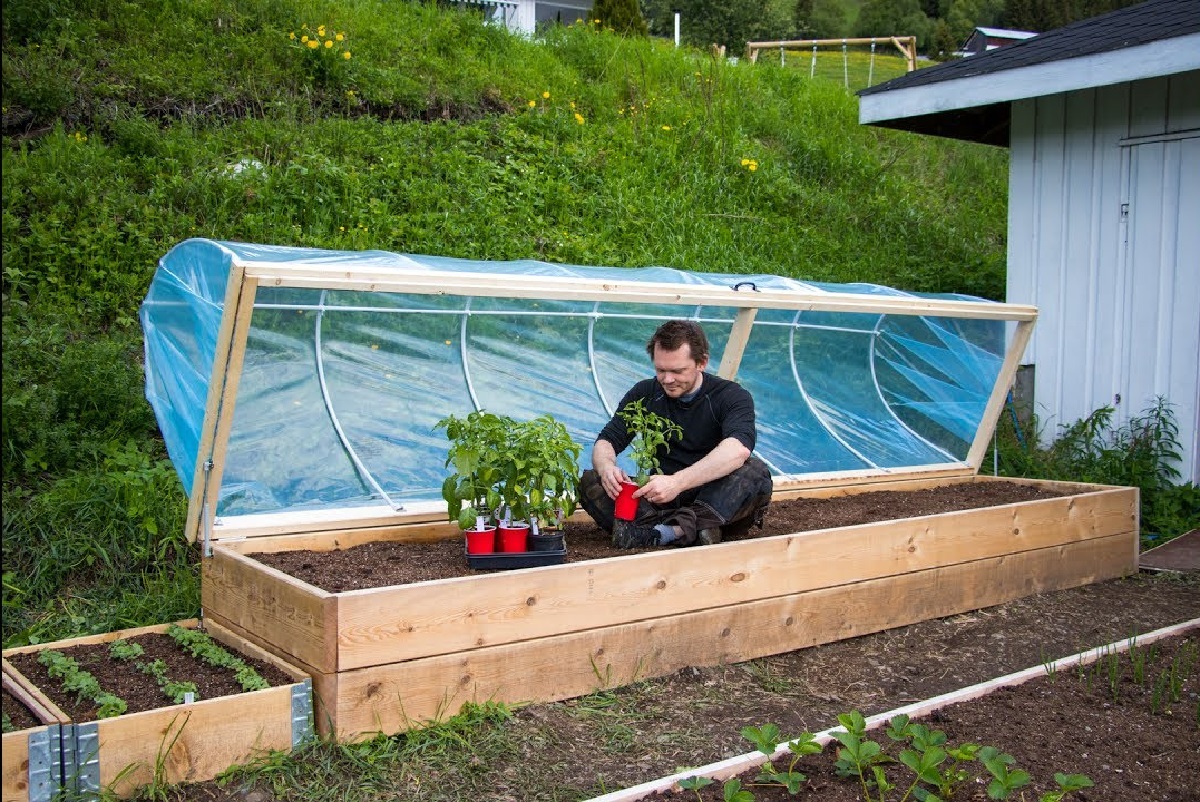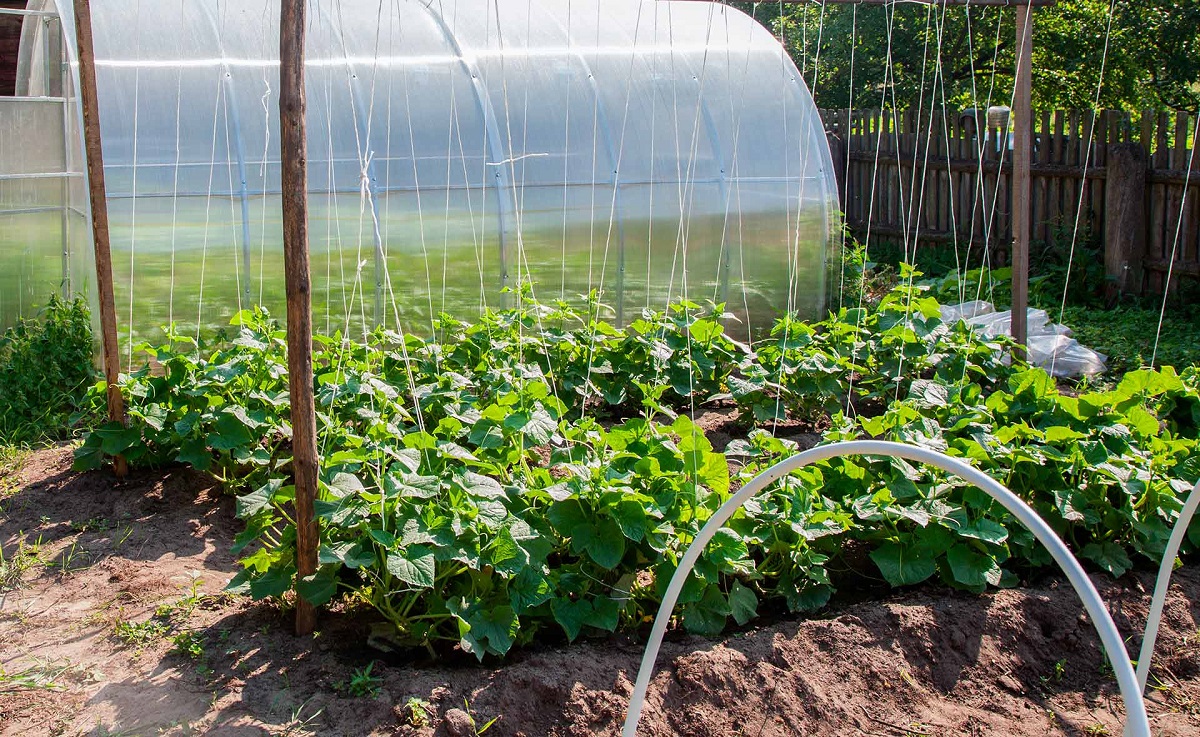
Home farming is becoming more and more fashionable. There are many people who want to learn how to grow their own food ecologically at home. There are those that have a garden that is more spacious and they can afford to build homemade small greenhouses.
In this article we are going to tell you what are the characteristics of small homemade greenhouses and how you should build one.
Homemade small greenhouses

If you have space at home, consider making your own small homemade greenhouse to grow your own fruits and vegetables. You have to remember that there are different types of greenhouses and depending on the type you choose you will have to use a range of materials or others; but you will always get benefits such as getting an ecological and high quality product, in addition to saving a lot of money at the end of the year, especially if you live in a sunny area.
A greenhouse is a closed, fixed growing area, within a short distance, to grow and cultivate different plants and vegetables such as lettuce, beetroot, broccoli, spinach, shrubs and stringers for our garden or terrace and many more.
The main characteristic of greenhouses is that when they are closed they can grow vegetables, isolating them from the weather conditions outside. Most professional greenhouses also include temperature and humidity control systems to determine optimal growing conditions.
Although there is pre-assembled greenhouses available in a variety of sizes (some of which are specifically designed for large-scale growing), it is also common to opt for homemade greenhouses because they are relatively easy to put together.
Advantages of small homemade greenhouses

The advantages of sowing in a greenhouse are many, but the most important is protecting plants from low temperatures, allowing a microclimate in which seeds can be sown without having to wait for the normal sowing season.
We can also grow our own seedlings and prepare them for the spring and summer seasons, so we can save on buying seedlings and make sure they are organic.
Another of the benefits of a greenhouse is that it allows us to store and protect ornamental plants during the winter. On the other hand, in summer we can dry herbs, fruits, etc. A homemade greenhouse is a great idea and you do not need a large investment or many materials. Some of the advantages they offer are:
- Soon, a homemade greenhouse becomes a profitable investment, which translates into food on the table, which allows us to save money in the medium term.
- It guarantees the quality of the food obtained, since the results are always supervised by its nursing staff, and the process and the required products are always under control.
- Vegetables of all kinds can be grown out of season, which allows us to obtain more than one crop cycle per year, maximizing yield and making a profit before investing.
- Indoor produce will be able to take more advantage of the summer sun and grow faster, leading to an earlier harvest.
- It is a great ecological idea for you to discover a new world of leisure, enjoy taking care of nature and watching your food grow. Plus, you'll get the satisfaction out of eating what you grow, so you can even judge which foods are best for you.
So now you know, if you have a bit of land and the necessary time, you want to save money and get natural products and grow your own products, try building your own small homemade greenhouse, you won't regret it.
Differences between a homemade greenhouse and a domestic one
En general, a home greenhouse is the same as a home greenhouse. These expressions suggest that they share the same greenhouse structure, with the common goal of providing space for both hobby gardeners and lovers of urban gardens.
However, if we try to further understand the difference between a house and domestic greenhouses, we can deduce that:
- Domestic greenhouse: related to the assembled greenhouse.
- Home greenhouses: More to do with DIY structures made of substrates such as: wood, aluminum strips, hinges, straps, plastic, reeds or other types of covering material, etc.
The points that must be analyzed to see the keys of small homemade greenhouses compared to domestic ones are the following:
- Forma
- Area
- Volume
- Irrigation system
- Subscriber system
- cover type
- Construction materials
- With hinged door or zippered door
- Ventilation equipment: manual or motorized
Points to consider when choosing a domestic greenhouse

- 1 point. Decide which crops or plants you want to grow, either throughout the year or only at certain times. Remember, this also determines the space and size you need.
- 2 point. Determine the location, the available space in your home, garden or patio to choose the right size and availability. You will find them from 4,8 to 12 m long.
- 3 point. Select the type of structural material: wood, plastic, aluminum or fiber, etc.
- 4 point. Choose the cover material that you think is most suitable. 700-900 gauge low density polyethylene plastic is recommended for a 2-4 year lifespan. They can be yellow or colorless. Each type of plastic is suitable for a specific area: normal polyethylene, long-lasting thermal polyethylene, polyethylene with EVA (ethylvinylacetate) or triple-layer polyethylene.
- 5 point. Greenhouse ventilation can be natural or mechanical. Among the latter we can distinguish between simple mechanical ventilation or wet mechanical ventilation.
- 6 point. Prices of domestic greenhouses: We can find homemade or domestic greenhouses on the market, with prices ranging from 150 euros (about 28 square meters for small and simple ones) to more than 1000 euros for other more durable materials.
As you can see, there are different tools to have your own greenhouse at home. More and more people are encouraged to grow their own food organically. These benefits are not only for physical health through a good diet, but also for mental health offered in these greenhouses. I hope that with this information you can learn more about small homemade greenhouses and their characteristics.